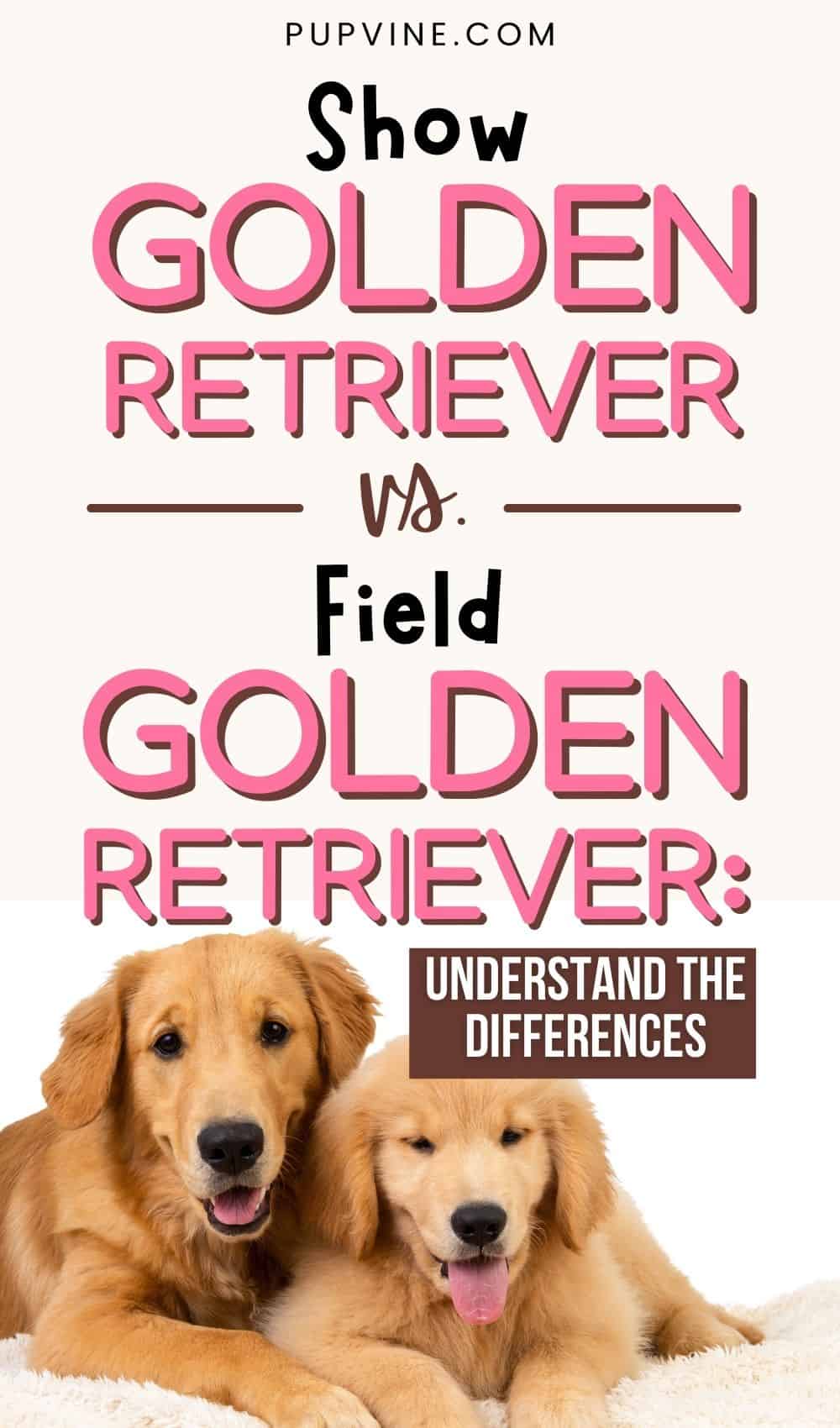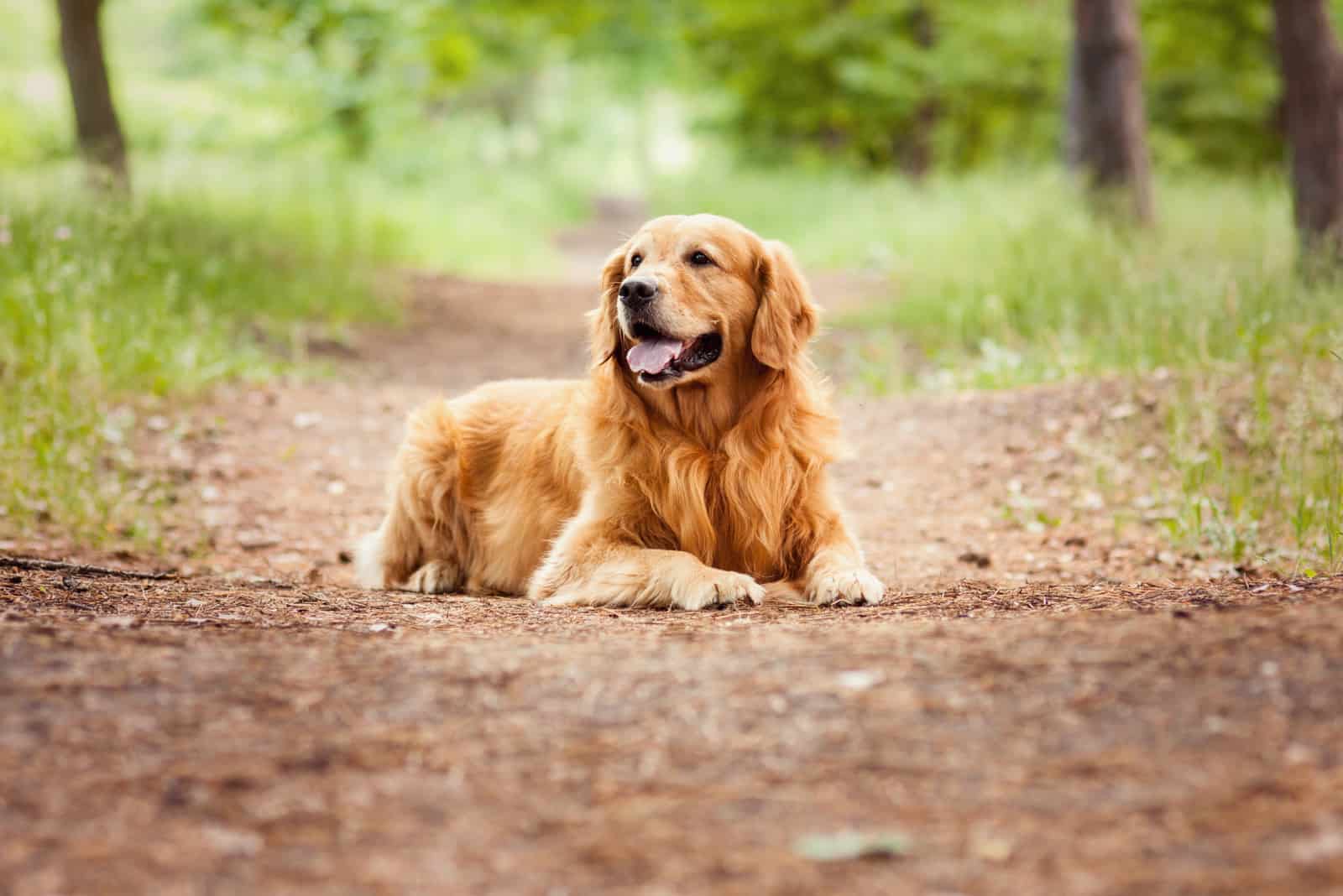Getting a new pet is a lengthy process.
First, you need to determine what type of pet you want. If you’re here, chances are you either want or own a dog.
Then, you want to know which breed is adequate for you. Do you want a large or a small dog? Does this dog need to be hypoallergenic? Are you looking for a family dog that should be good with kids, or do you want your dog to guard your house?
Suppose you want a good family pet that can also potentially win in a dog show. Is a Golden Retriever a good pet in that case?
Just as is the case with English and American Golden Retriever, there is a slight difference between a show Golden Retriever and a Golden Retriever that is bred for work in the field. While both make excellent pets, only one can win competitions. But, what’s the difference between the two?
What Does A Golden Retriever Look Like?
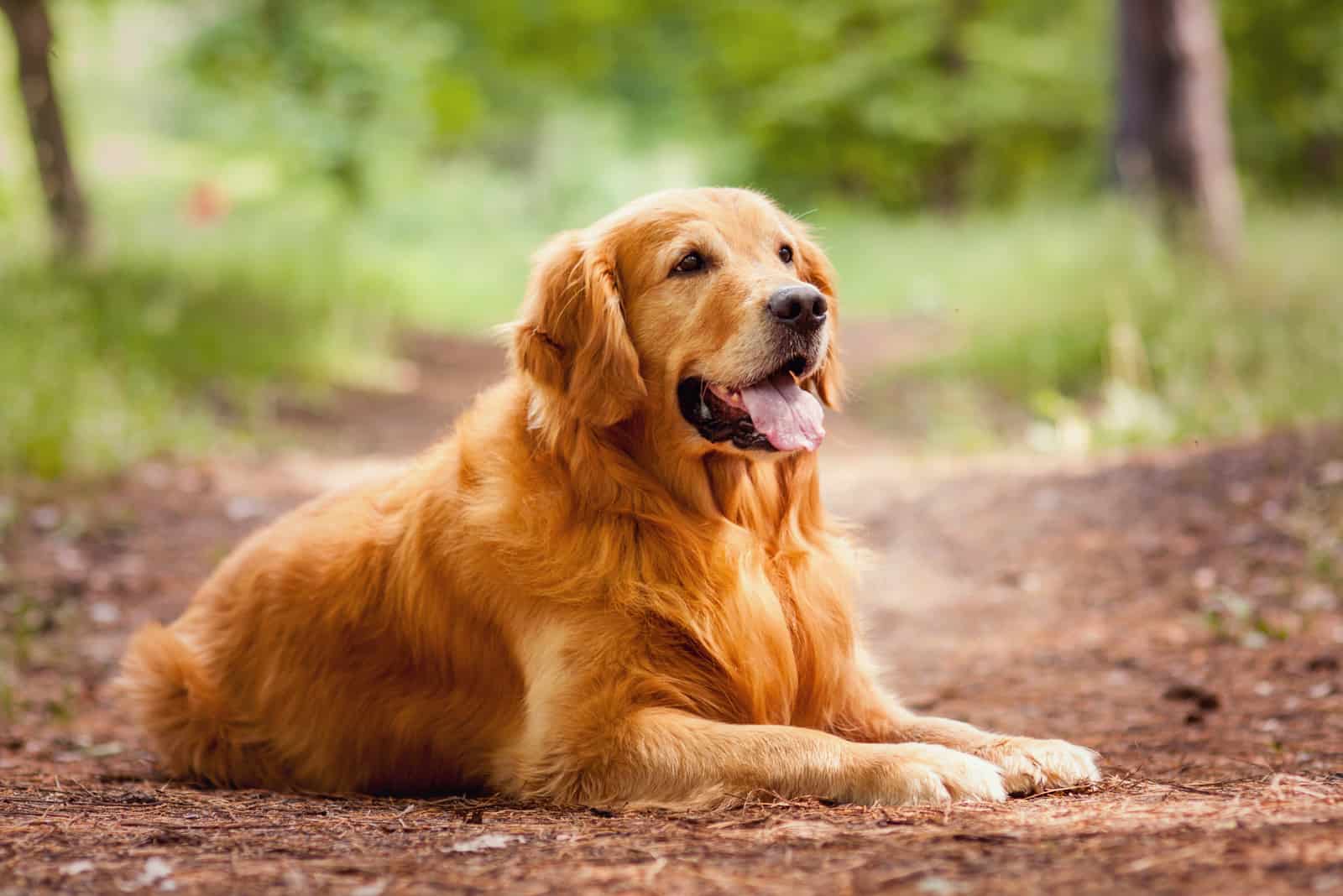
According to the American Kennel Club (AKC) breed standard, Golden Retrievers are petite dogs no heavier than 65 lbs. They are middle-sized dogs that are one of the most popular breeds worldwide.
Golden Retrievers have a warm-colored coat. They aren’t necessarily golden despite what their name says. In fact, the golden color became predominant only in recent years. To begin with, Golden Retrievers had red or even dark golden coat color.
These dogs have buff feathers and long, thick, wavy double coats. The undercoat has an inner layer that works excellent as insulation. This insulation is necessary for the winter as this is when many hunting seasons are.
Read More: Male Vs Female Golden Retriever
What Is A Field Golden Retriever?
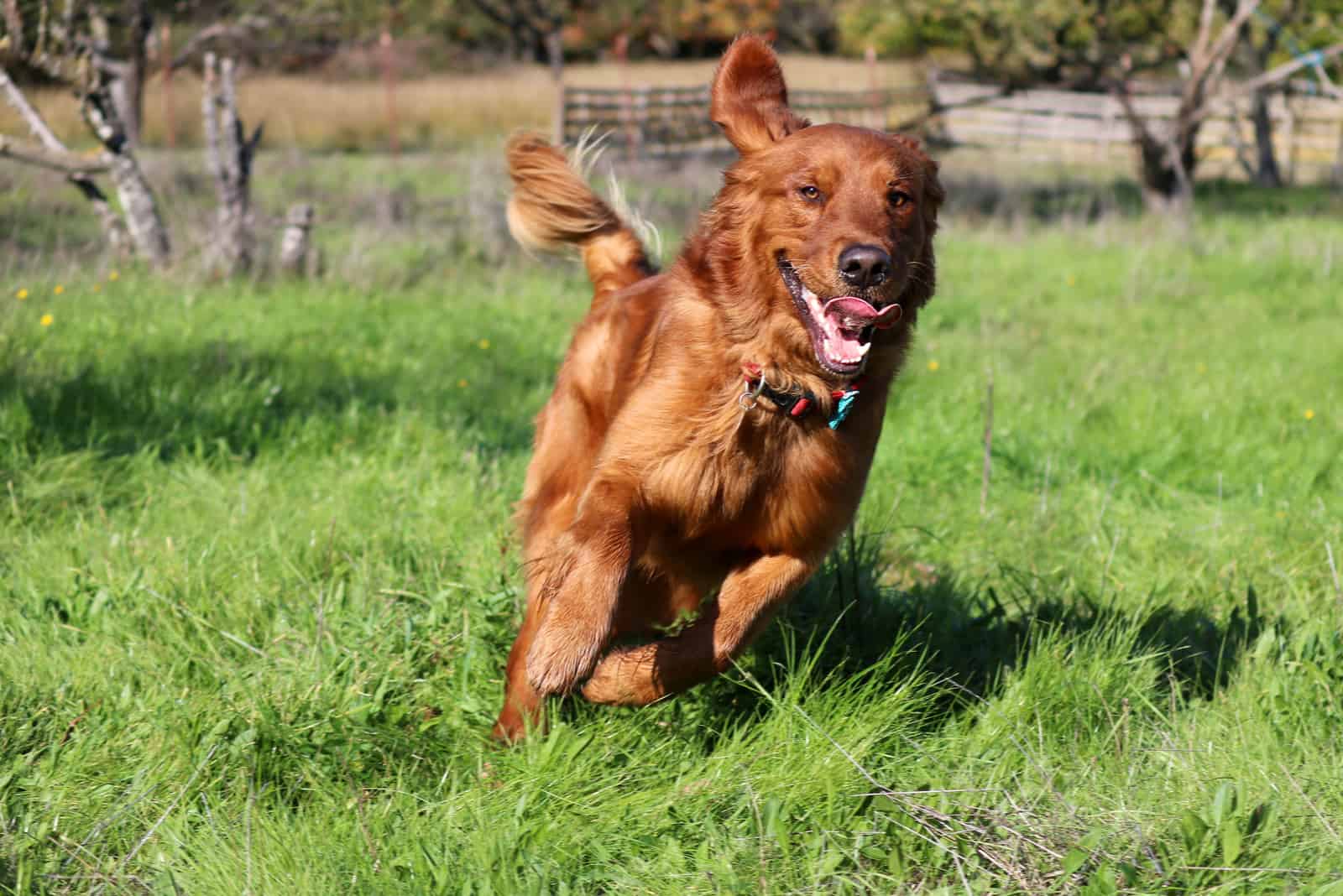
Yes, Golden Retrievers were hunting dogs and working dogs. This is what they were bred for. The descendants of these dogs are known as field Golden Retrievers.
These dogs are bred to hunt and to stay in the field for the entire day, retrieving gunned down fowl. Because of this, their bodies are slim and athletic, adapted to long runs and even swimming!
Because they are bred to hunt, they tend to have more driven personalities, but this high energy drive doesn’t stop them from being loving pets that are always eager to please their owners. They have a lot of energy, and you should be prepared to dedicate a time of day to walking them and playing with them.
Their fur tends to be dark golden instead of light. Also, they have shorter coats than what you might think of when you imagine a typical Golden Retriever. This can make them appear to be less shedding than show Golden Retrievers.
At the same time, they sometimes can have flat coats instead of wavy ones. This makes some people believe that these pups aren’t purebred Golden Retrievers, but rather, mutts, which simply isn’t true.
These pups are very smart, and they live for your praise and occasional treats, so they are easy to train. In fact, they might think that training is a game they need to win, so you likely won’t have any issues potty training them or teaching them tricks.
If you don’t put your time into training this dog breed, these dogs might become somewhat mischievous as they’ll have to get rid of that excess energy. This might include refusing your commands, chewing up your shoes, or stealing things from your closet.
While they make excellent pets, they need plenty of attention or they’ll try to find it themselves. They can play a bit rough, but they are still very devoted to their family and ‘pack members’.
Other than work in the field and during a hunt, these pups also make excellent rescue dogs. They excel at dog sports as well, such as dock diving and agility sports.
What Is A Show Golden Retriever?
Show Golden Retrievers were inbred from field Goldens to have a certain desired look that judges at conformation events would expect the breed to look like.
Some subtypes of the bread, such as blockhead Golden Retrievers, were especially bred to be more fitting to dog shows!
They are heavier, and some might even reach 100 lbs of weight, which is a lot more than field retrievers; therefore, they would hardly be able to complete any hunting or field work. Their withers are stronger, their head is bigger, and their entire bone structure tends to be heavier.
They are much more sociable than field Golden Retrievers, making them quite friendlier and more willing to please. Keep in mind that both breed variations are great with kids and other pets, so you won’t have any issues of the sort with any of the two dogs.
These pups don’t have as much energy as field Goldens, but don’t let this information fool you. All Golden Retriever puppies require plenty of exercise as their energy levels are somewhat higher than regular apartment pups.
They have long, gorgeous coats, with long feathers around their ears, tail, and hindquarters – although, sometimes, it can appear on all legs. The color of their fur is usually the beautiful, golden shade you know this breed for.
However, because of their double coat and long outer coat, expect them to shed a lot. Be prepared to have hair flying around everywhere – but more about their grooming needs later.
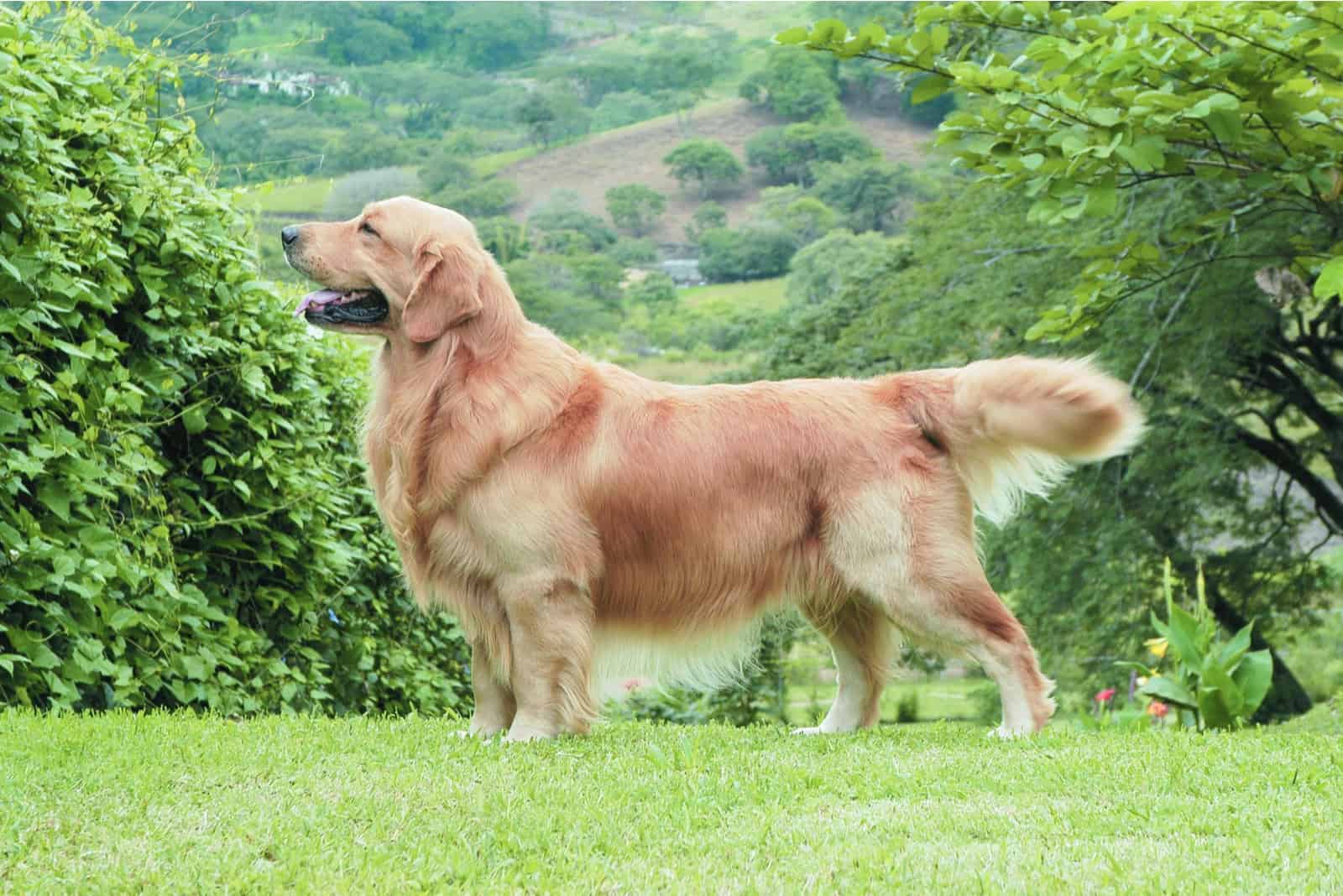
When it comes to trainability, show Golden Retrievers are equally good learners as their counterparts on the field. They, too, love praise, and treats help as well. However, they won’t enjoy studying as much as they were never bred to be active, working dogs.
If we have to pick one, we’d say that show Golden Retrievers make slightly better family pets. This is because they are calmer and overall friendlier. This also makes them excellent service dogs and therapy dogs.
However, many show Golden Retrievers are a product of inbreeding. This means that some may come with certain health issues and genetic conditions, such as hip dysplasia.
This is why it’s important to make sure you’re getting your Golden Retriever puppy from a responsible breeder who conducts DNA testing of the entire offspring – and their parents as well.
Has A Golden Retriever Ever Won Best In Show?
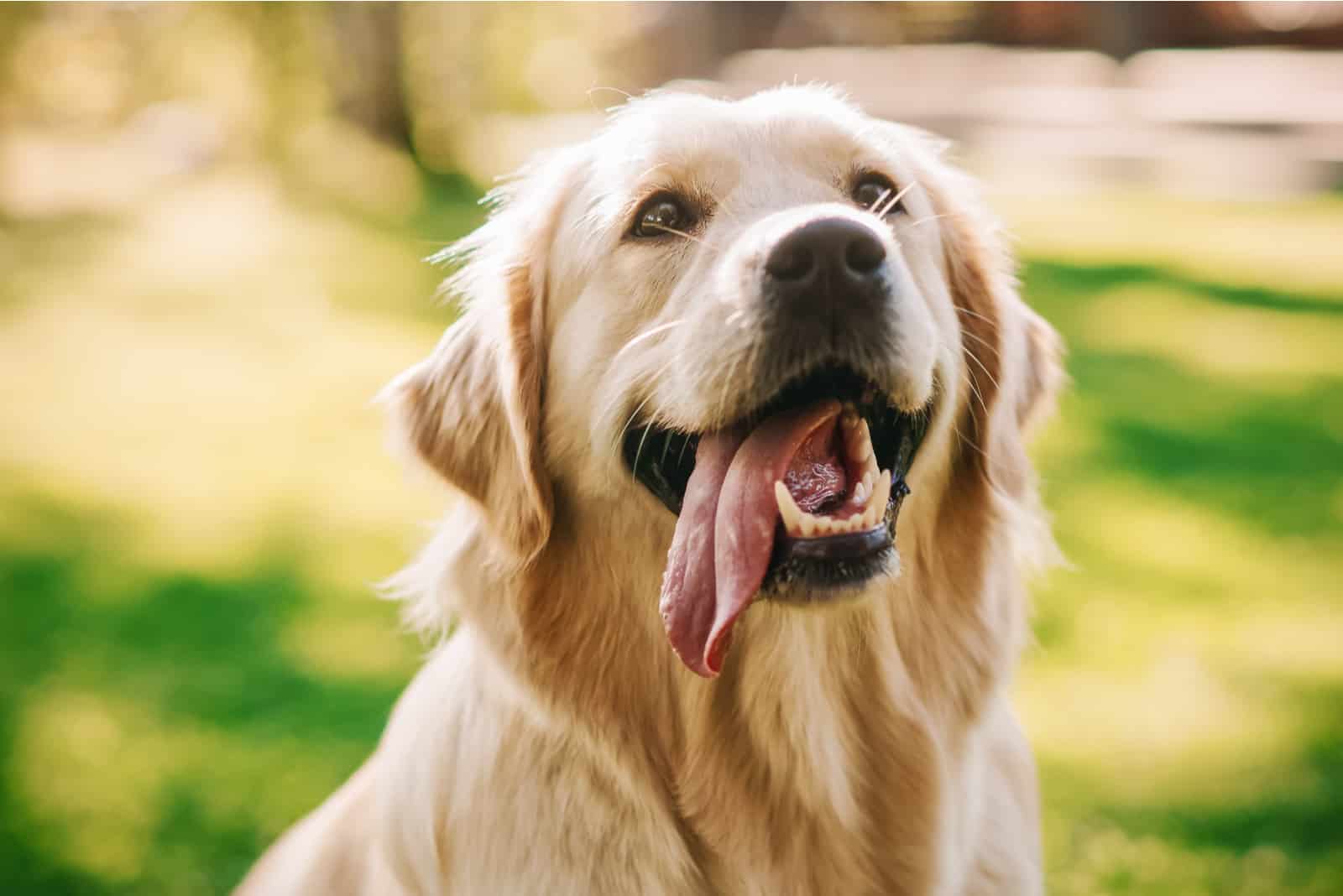
Best In Show isn’t just an award in any dog competition out there. It is THE prize… the best of the best.
This is the first prize at the Westminster Kennel Club Dog Show, a show partly organized by the AKC. It has happened annually since 1907, and representatives of the most popular breeds compete in a New York venue for this highly valued prize.
However, a surprising number of the US top 20 favorite dog breeds has never won Best In Show – 11 of them, to be precise! And, sadly, this includes the Golden Retriever.
In the latest years, some of the winning dogs were Poodles, Fox Terriers, German Shepherds, Bichon Frises, and Beagles.
Some other popular breeds that never won Best In Show include:
• Cavalier King Charles Spaniels
And so on.
Golden Retrievers didn’t really do well in these competitions. However, they did win Best In Group two times – in 2006 and in 2020 – and they won the second-best in 2009. They also do well in sporting groups.
Still, despite their popularity, and for a long time, being recognized as an independent breed, they seem unable to catch that first spot.
How Do You Groom A Golden Retriever For Show?
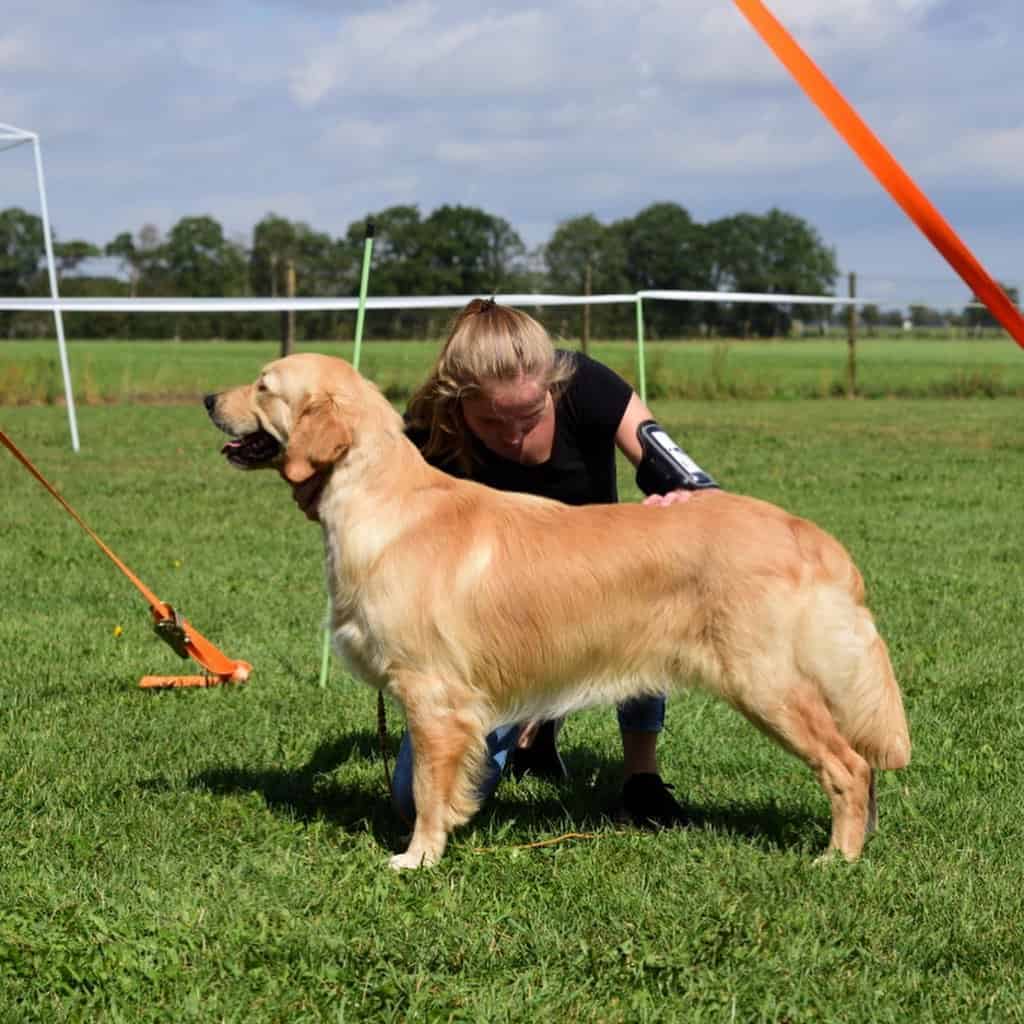
Photo from @enzo_unlimitededition
If you’ve bought a show Golden Retriever and plan on having him participate, you probably wonder if there is a specific way to keep him groomed.
Yes, there is!
A show Golden Retriever’s ears, shoulders, tail, and feet have to be groomed in a very specific way, especially in places with feathering. Here’s how to do it!
Preparation
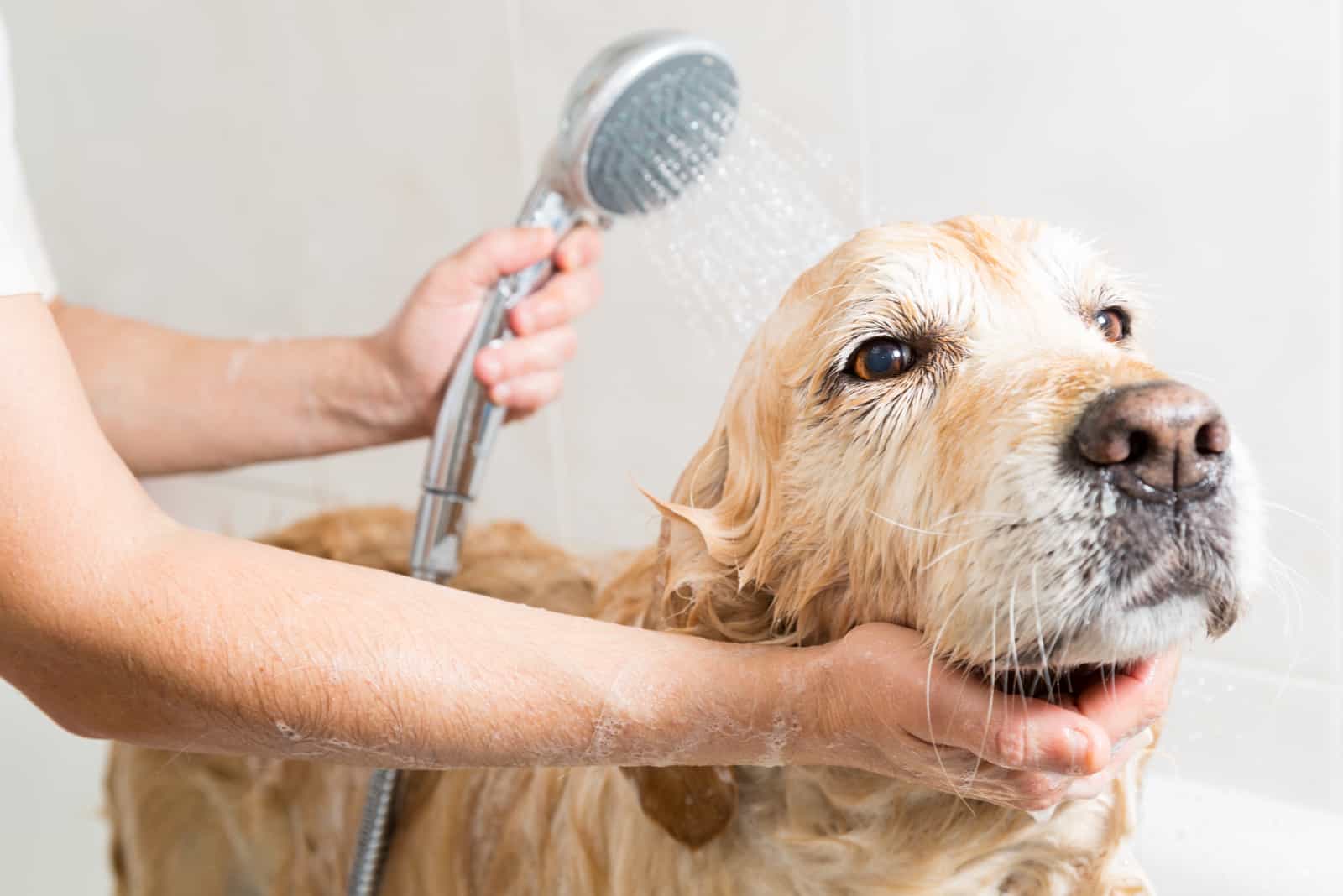
Before everything else, ensure that your dog is clean. While excessive bathing isn’t good, you should bathe and blow-dry your Golden before every show. In fact, some dog groomers prefer trimming their pups’ hair before a bath and only do touch-ups later.
Do you notice all those show Golden Retrievers having shiny, lengthy coats? It’s the result of good blow-drying work.
If you don’t have an adequate blow dryer or if your pup is terrified of them, you would be relieved to know that you can still straighten the wavy dog coat without this product – but it is a bit tricky.
Pin towels snugly around your dog while his hair is still slightly damp. This can keep his hair from curling up.
Blow dryers can come in handy on many different occasions, such as after trips to the beach or playing in wet weather. They can even help you blow away all that loose hair during the shedding season!
Ear Grooming
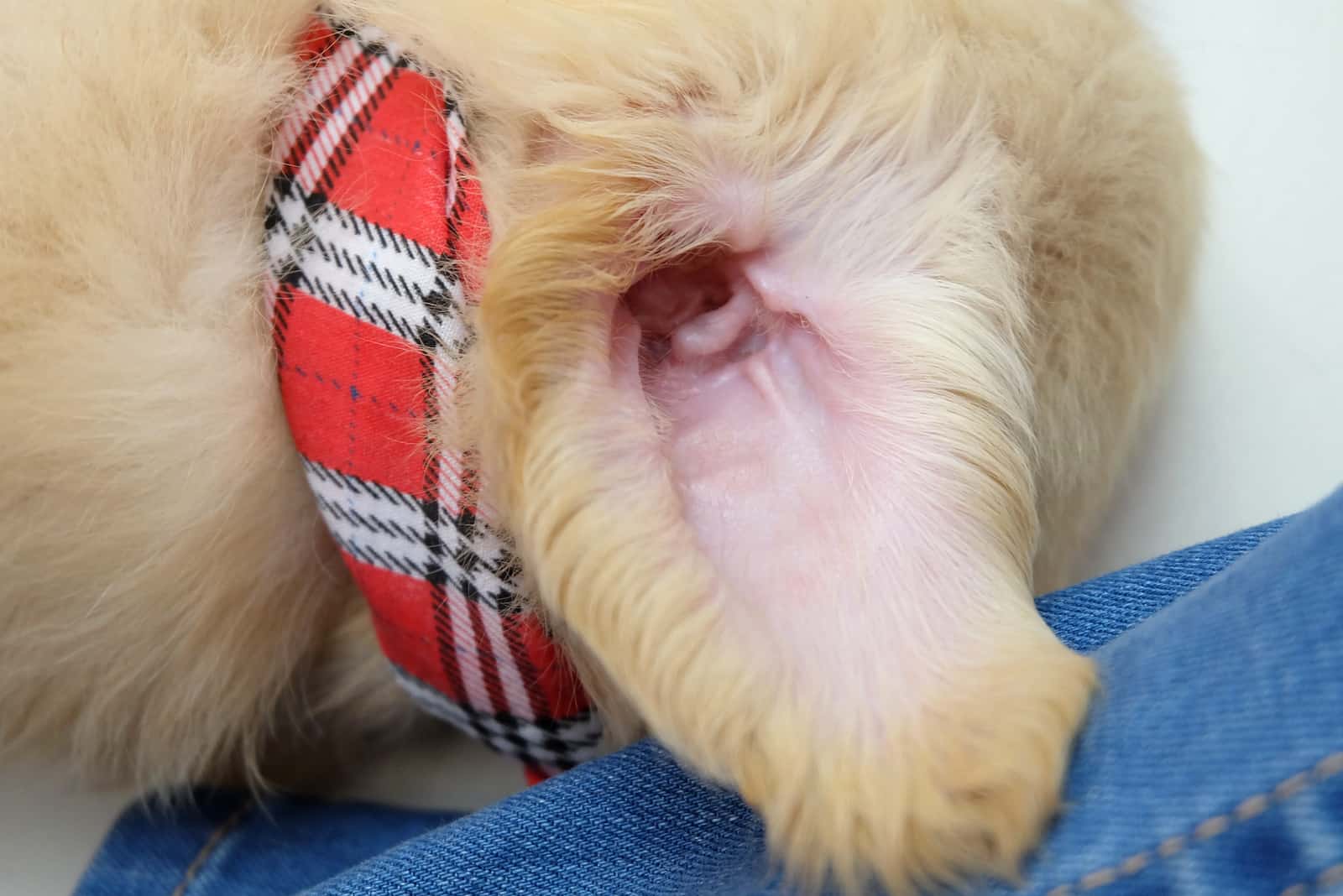
Now, we’ll begin by explaining how to properly groom your Golden Retriever’s ears.
First off, you should fix the feathers behind the ears. To make things easier, hold your pooch’s ears forward, so they are out of your way.
Take thinning shears and, while keeping them in the vertical position, get the blades under the fuzzy bits as close to the skin as possible. Make up to three cuts, then brush everything and take a good look at the results.
It might take you several repetitions until you’ve made everything look according to your likings, but you have to take it slow. You don’t want to entirely remove the fuzzies… just keep them thin and trimmed so they will lay nicely on the neck.
Once you’re done with the fuzzies, begin trimming the inside of the ear flap. Start from the bottom corner, then go all the way to the dog’s face.
You don’t want to trim this part entirely short and smooth as this will create ‘too sharp’ of an appearance. The only time you’d want to do this is if your dog has extremely thick fur and heavily coated ears both inside and out. If this is the case, you’d want to smoothen everything out.
Don’t forget the hairs in front of the ear’s base. Use the same method and the same thinning shears: thin everything – brush it out – take a look – repeat.
The hair right around the ear opening should be trimmed close. You might even pluck it with forceps. Just make sure that no bits of hair are falling into the ear canal.
The hair on the dog’s neck, right underneath the ear, should be thinned as well.
If you take a look at your pup’s ears, you may notice that the hair is longer at the top, then it shortens towards the tip. While you want to make sure that everything is neat and short after the trim, you should also want to keep this natural effect.
If you cut everything too short, then your Golden will no longer have that cute, soft look, but rather, a much ‘harder’ one.
Make sure you’re holding your scissors in such a way that this pattern is continued. Remember – longer at the top, short at the bottom.
If this is your first time preparing your pup for a show, then cut everything a few weeks beforehand and look at the results a few days later. This will give you enough time to view the results of your work and fix any mistakes you might have possibly made.
In case you feel like trimming the hair all over his ears, start from the top. Use thinning shears, and place them underneath the dog’s long hair, close to the skin, then work a couple of vertical strokes at a time.
Once you’ve done about a quarter of his ear, stop, comb it out, then look at the results from a distance. If everything seems well, you can continue. If not, try fixing what can be fixed.
As this is the most important part of ear trimming, make sure you take your time and work slowly. There’s no purpose in rushing. If necessary, return to it after a day once the hairs have settled.
Whiskers
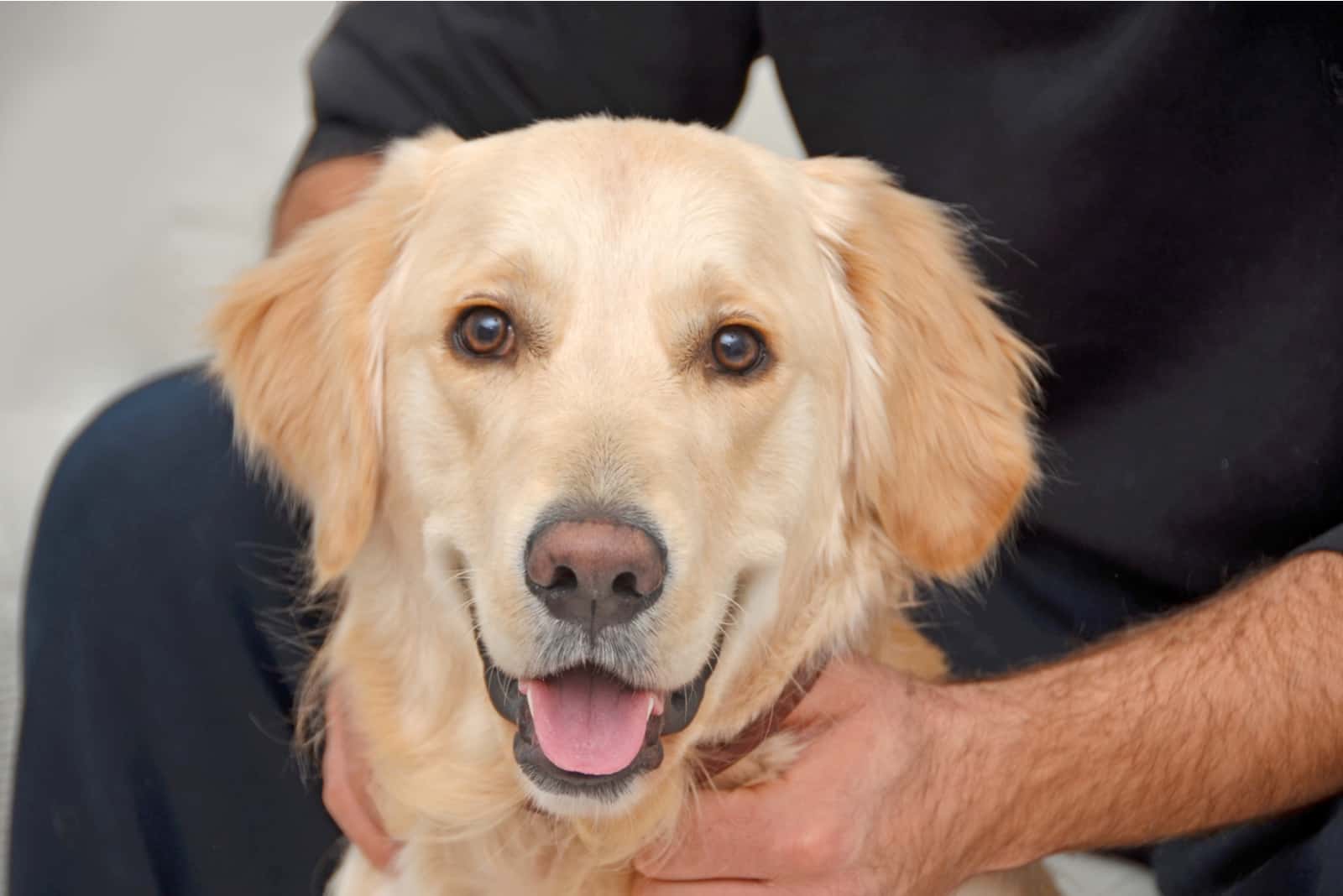
A Golden Retriever’s whiskers are of great importance in hunting, field trials, and other performing activities. As they can be a part of the show ‘with’ whiskers, you can decide whether you want to leave them on or trim them.
If you do choose to trim your Golden’s whiskers, you should use small, blunt-nosed scissors as you would risk damage with any of the larger ones.
Stand so that you’re facing the dog, hold his muzzle with one hand, then pull his skin slightly towards you in order to make the whiskers stand straight out. When you do this, your dog can’t ‘hide’ them.
Then, with the blunt-nosed scissors, go very close to the skin and under the short facial hair. Trim the whiskers from the back to the front, and make sure you cut each one individually.
A good tip is to do this in the daylight or make sure the room is well lit. This way, you can precisely see what you’re doing.
You should also cut those fine whiskers around the pup’s nose and under his chin, but if your Golden is steady, you may do this with your regular straight shears. These whiskers aren’t the same as the other ones, so you might even trim them together with the coat.
Whiskers along the lip line, on the eyebrows, cheeks, and by the throat should be cut as well.
Feet Grooming
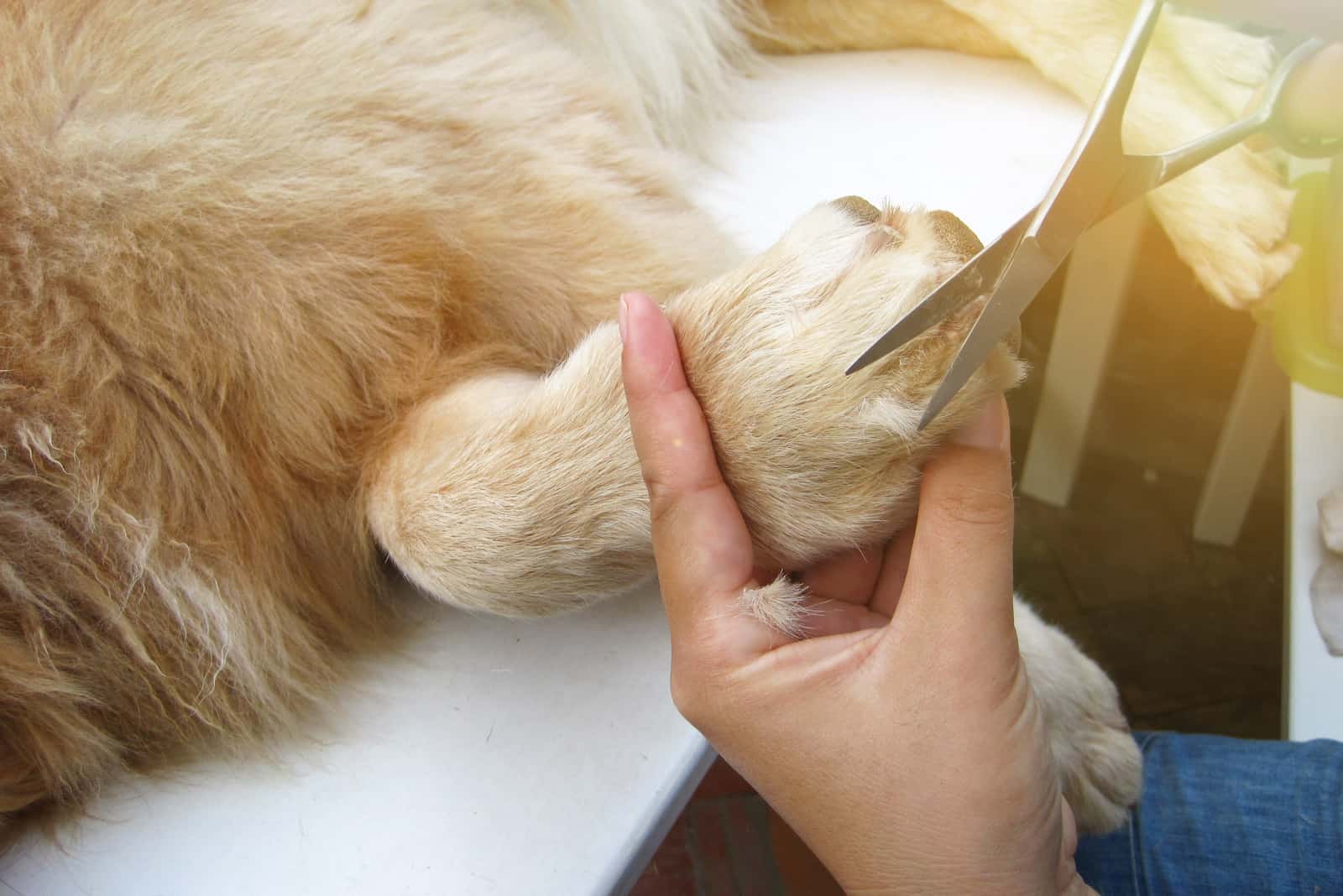
Before you start cutting the hair on your pup’s feet, trim his nails.
Then, push the fuzz growing from between the toes back through your dog’s toes with your fingers.
Hold the foot backward, and hold the straight-edge shears flat to the pads of the foot, then trim all of the unruly hair, including the fuzz you’ve pushed beforehand.
You shouldn’t trim the hair that grows between the pads from the bottom or the top of the foot. If you do this, you’ll have an ugly, flattened foot, which is not according to the breed standard, which describes the foot as being cat-like.
You should use the straight shears to cut the hairs around the perimeters of each pad. Keep the foot held backward and work from the bottom.
When it comes to the fuzz on the foot’s top, the one you’ve pushed down through the toes, you want to pull it back up and keep it straight. Then, thin it with one stroke of the thinning shears.
Don’t do any more than one. Otherwise, you’re risking going overboard and making the feet look flat.
Brush the hair down by using a bristle brush or your fingers. If necessary, pluck a small number of hairs out, but don’t pluck all of them.
Finally, have your dog stand on the table and use the straight shears to trim around its feet. While you’re doing this, make sure the tip of the blades is resting on the table.
If your pup has bigger feet, you may want to trim a bit more away from the toenails. This will make the toes appear shorter. However, you don’t want to expose the toenails, especially on the back feet.
Once you’ve completed this, look at your pup’s feet. If you’re not satisfied because of the fuzz on top of the toes, repeat the process by pulling the fuzzy hairs through the pads, then cut, then return them up.
You may also want to angle your thinning shears and make the cut closer near the toenail while keeping it longer close to the top of the toe. Remember never to make more than one light thinning cut.
When it comes to the hock, this is pretty straightforward. Brush the hair out from the hock and the foot. Then, with straight-edge shears, make a vertical cut, keeping the hair no longer than an inch at the back of the hock.
If your dog has long and thick hair, thin it down a little bit with thinning shears.
Tail And Shoulder Grooming
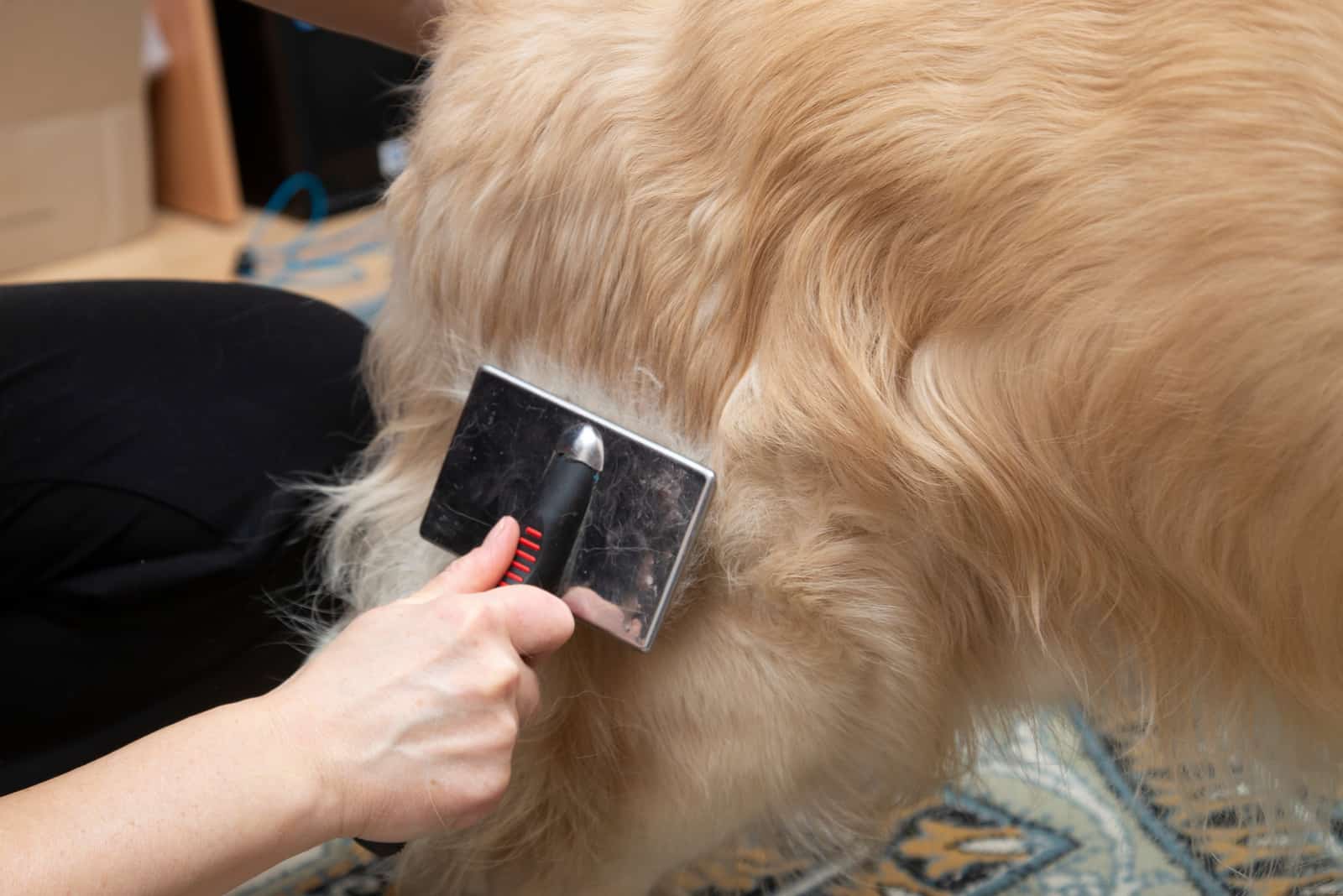
While this is a huge surface that you need to take care of, this task isn’t that hard. In fact, tail and shoulder grooming is probably the easiest part of it all.
According to the breed standard, the tail should reach the dog’s hocks, but not go over it. While some dogs have longer tails, you should trim them in order to resemble that length as much as possible while keeping the tail from looking sculptured.
The Golden Retriever’s tail shouldn’t resemble the tail of an Irish Setter. Instead, it should have a round, full look.
The area at the base of the tail shouldn’t be groomed to separate the tail from the butt feathers – however, you might want to thin it in case your pup has very thick fur.
To get the length right, hold the tail down the hock and mark the point where the hock meets the end of the tail with your thumb. This should be the final length of the tail.
Then, with the thinning shears, start trimming right below that point. Give yourself a bit of leeway just so you can fix it in case you make a mistake. This is especially important if you’re a beginner.
If this is your dog’s first tail trim, then expect to see a ragged edge that can be longer at certain locations. This is normal, and it doesn’t necessarily mean you’re doing something wrong.
Use thinning shears and move from side to side throughout the tail breadth, but be careful not to make any blunt cuts. If you have some hairs peeking out at an extreme length, cut them as well.
When it comes to the shoulder line, if it’s heavy, then thin the undercoat and comb it out in order to blend the coat and stop the shoulders from looking heavy or ‘overloaded’. This is something that should be done throughout a period of several days just to make sure you’re not missing anything.
On some dogs, you might want to thin the hairs at the withers – just keep in mind that you shouldn’t remove the topcoat in any of these areas. You just want to trim the undercoat to make the dog look slimmer.
If your pup ends up having an hourglass shape from the top, or if he loses the natural shape of his fur, he wouldn’t look desirable according to the breed standards.
Which Golden Retriever Type Should You Get?
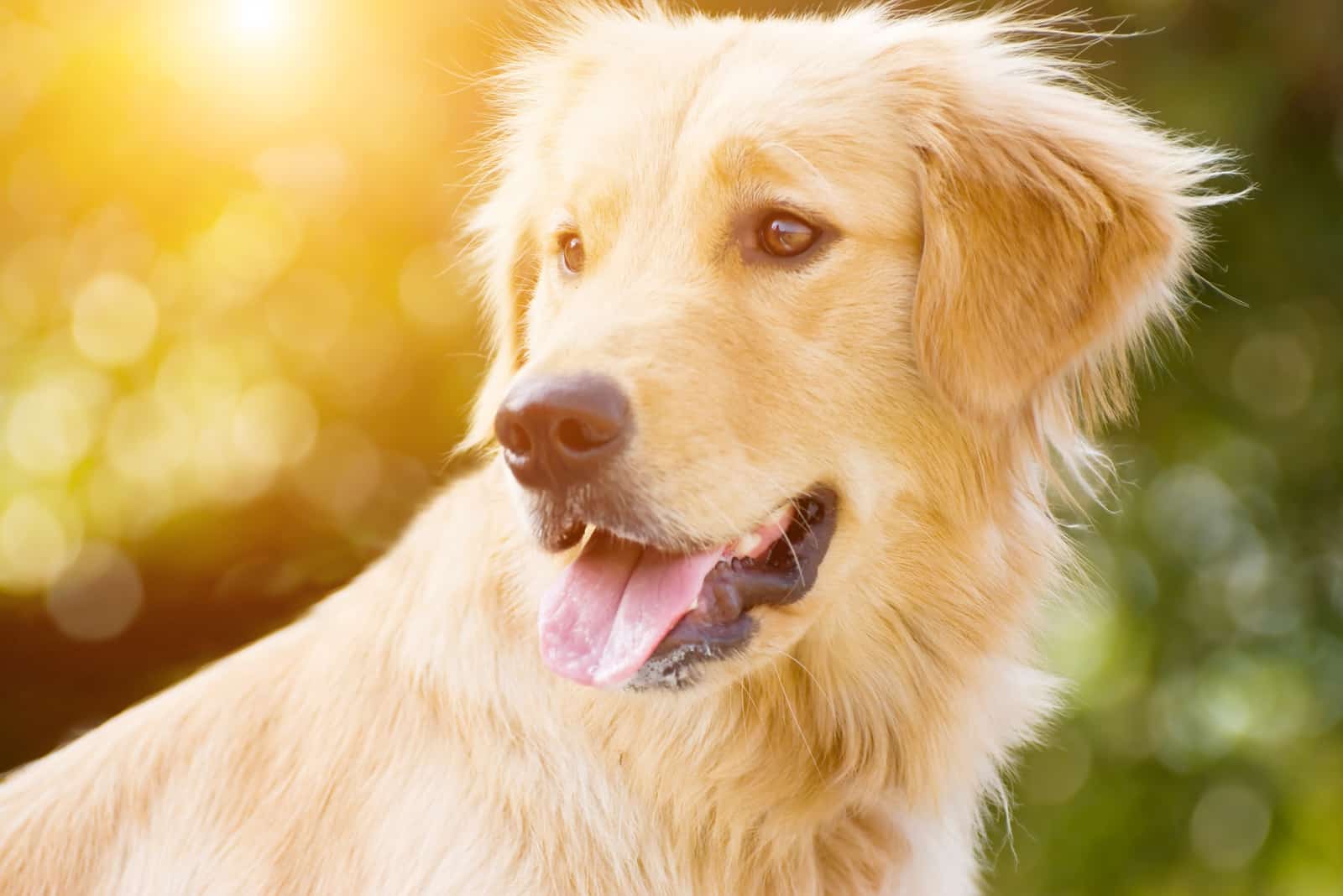
Despite one being bred for the show, and the other, for work in the field, both Golden Retrievers belong to the same dog breed and have the same qualities.
While some minor differences in these two variants exist, there is no important difference when it comes to their personalities. Even the appearance-based differences don’t look extreme to a regular dog lover’s eyes!
However, if you plan on participating in any dog shows, make sure you get the show Golden Retriever. These pups were bred to take your breath away on the stage, and your dog might do just that.
No matter what decision you make, Golden Retrievers make amazing family pets. They are kind, loving, and friendly, and will even be great companions for your kids.
While grooming a Golden Retriever can be a task – especially with the number of loose hairs you’ll see flying around – it’ll all be worth it once you realize what kind of personality these dogs have.
Do you need help naming your show Golden Retriever? You can find many dog name ideas by clicking here!
Read Next: Mini Golden Retriever: A Purebred Or A Crossbreed?
